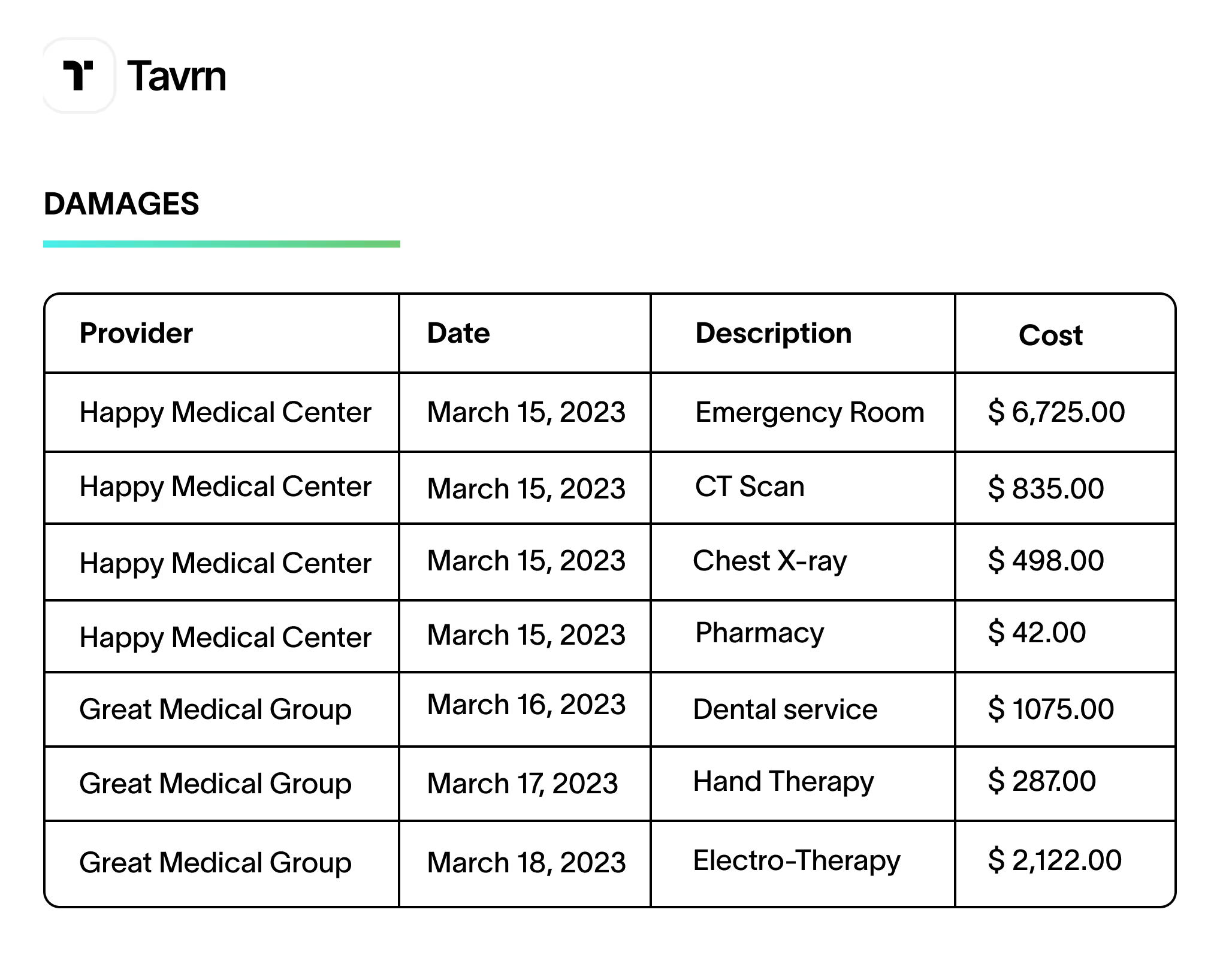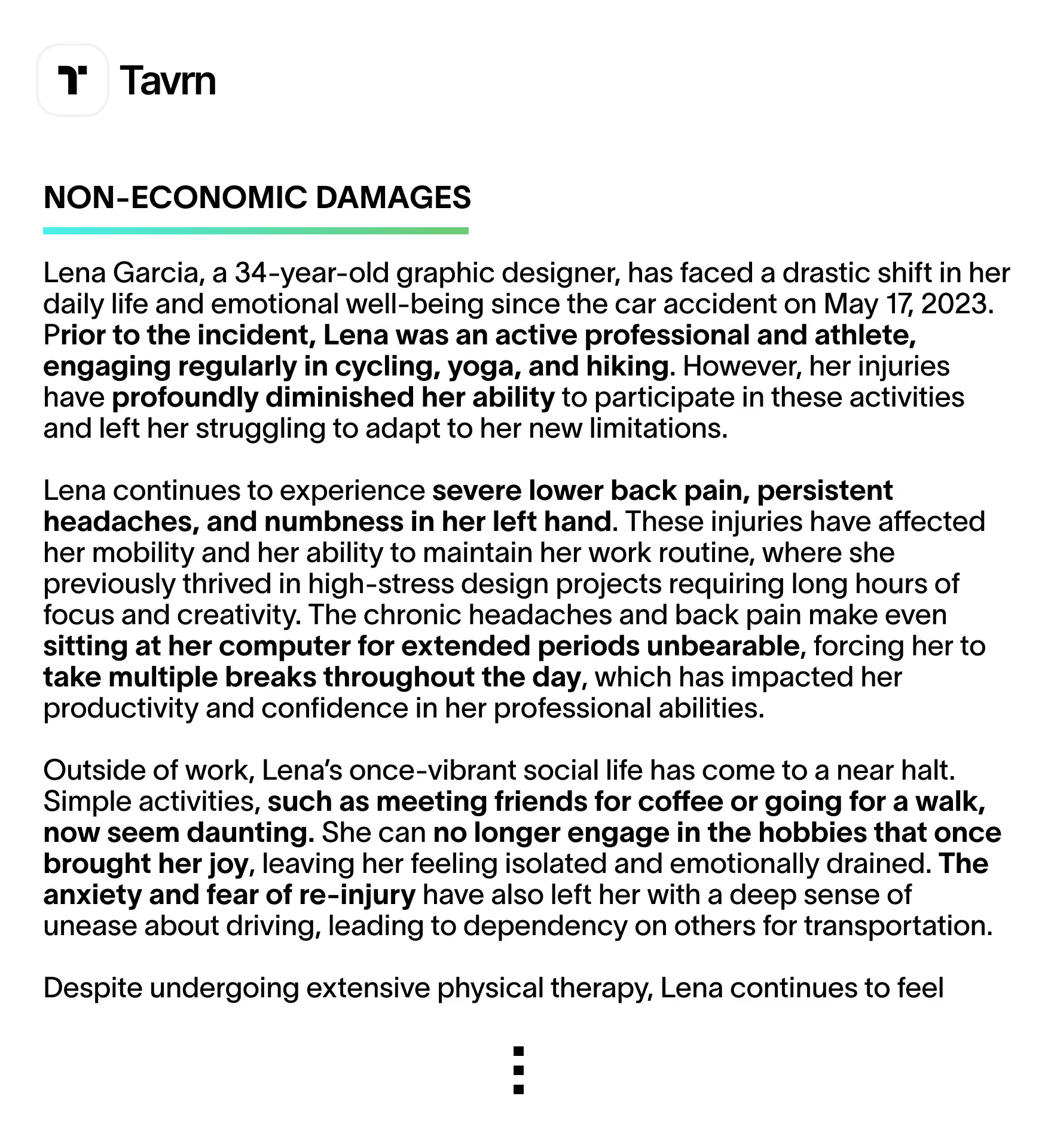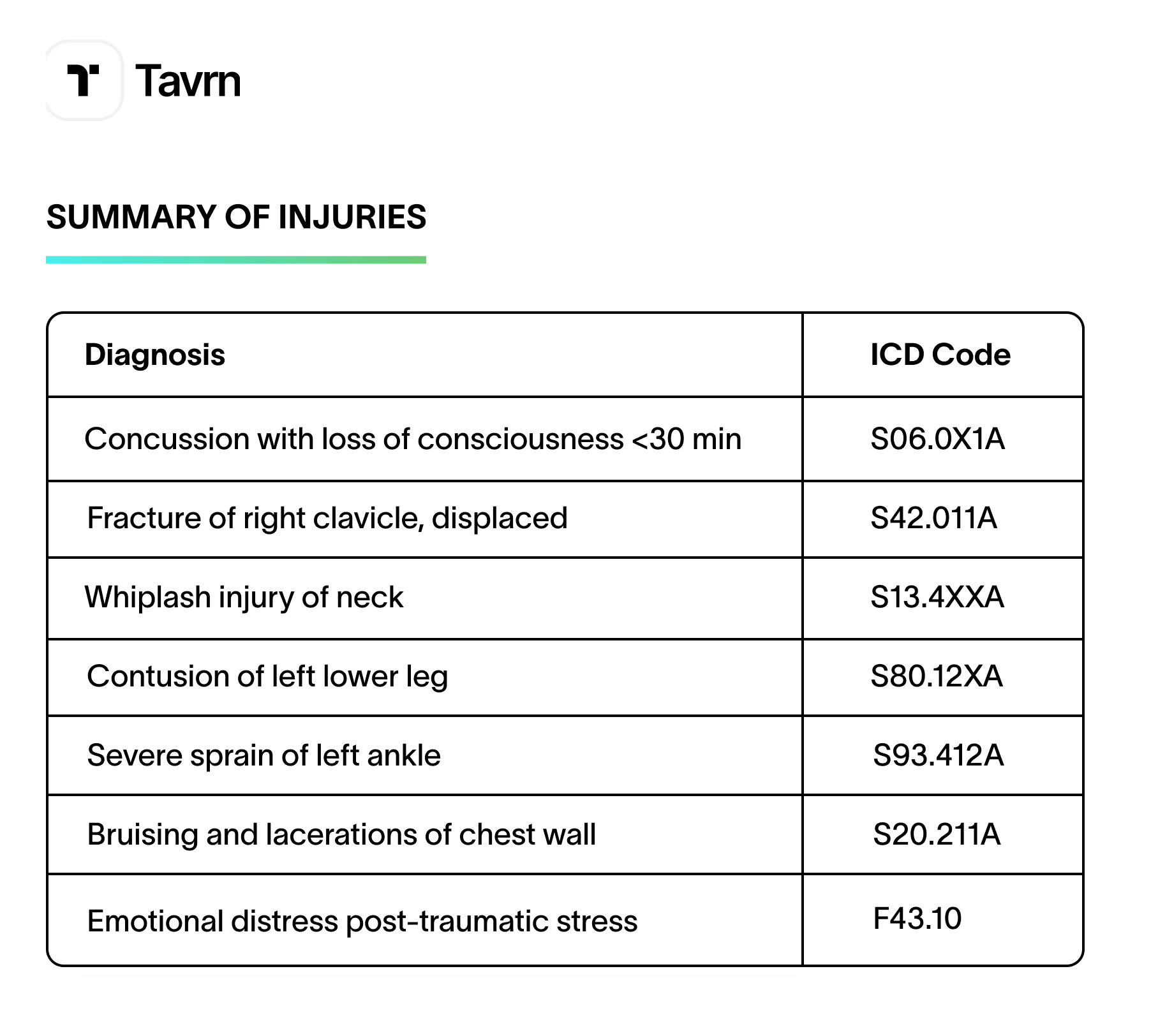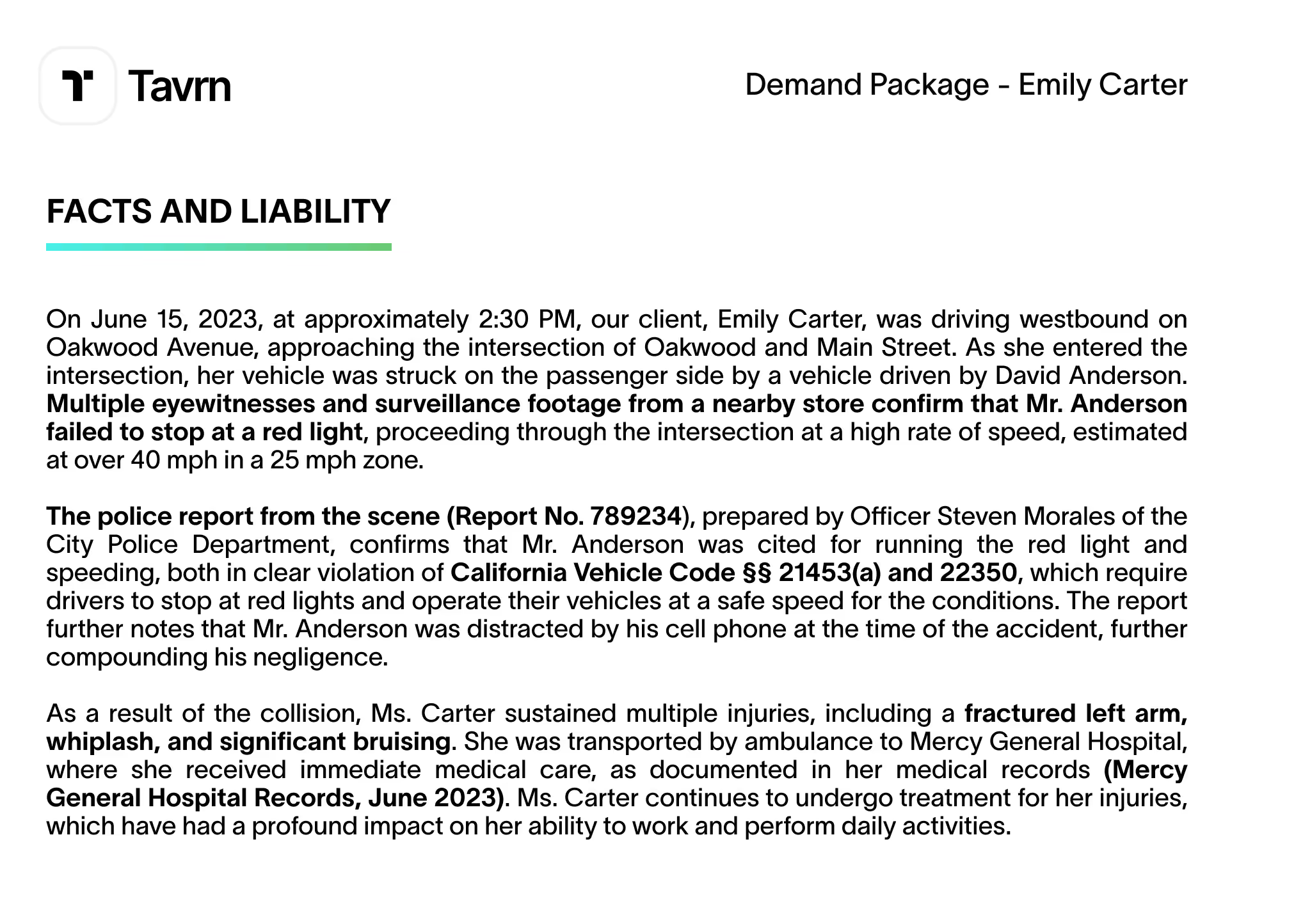How AI Can Streamline the Demand Letter Process
Attorneys bill for every minute spent on casework, including the countless hours drafting demand letters. Most legal professionals are all too familiar with the tedious reality of creating these documents—reviewing client records, extracting facts, ensuring legal accuracy, and structuring a compelling argument. These time-intensive tasks inflate legal costs and divert attention from higher-value work. Worse still, a single overlooked detail can delay negotiations or substantially weaken a claim.
Modern law practices can't afford inefficiency, yet the demand letter process continues to be an administrative bottleneck that consumes valuable resources. This is changing as AI technology reshapes legal workflows, enabling attorneys to produce precise, court-ready demand letters in minutes rather than hours.
In this guide, we'll examine why traditional demand letter drafting has become outdated, identify the specific challenges legal professionals face in this process, and demonstrate how AI technology completely revolutionizes the demand letter creation process.
The Traditional Demand Letter Process: Challenges and Inefficiencies
A demand letter is more than a legal formality—it’s a strategic tool designed to compel action and establish negotiating power before litigation. A strong demand letter signals serious intent, outlines the claim, and cites legal grounds for financial or corrective demands.
Although demand letters aren’t legally binding, they carry significant weight in negotiations and legal proceedings. A well-structured document can lead to a quick settlement, saving time and litigation expenses. Conversely, a poorly crafted letter can undermine a claim or create delays by failing to establish urgency or credibility.
Common Legal Scenarios for Demand Letters
Demand letters play a key role in the following:
- Personal Injury Claims – Seeking compensation for medical expenses, lost wages, and damages.
- Medical Malpractice Cases – Establishing negligence or misdiagnosis.
- Workers’ Compensation Disputes – Documenting injuries and seeking benefits.
- Contract Disputes – Demanding fulfillment of contractual obligations or financial restitution.
- Insurance Claims – Pressuring insurers to honor policy agreements.
When preparing a demand letter, legal firms must ensure it’s precise and tailored to the specific context. A personal injury letter must thoroughly document medical history and financial losses, while an insurance dispute letter needs to reference relevant policy provisions and regulations.
The Psychology Behind Demand Letters
Behind every effective demand letter lies a carefully calculated psychological approach. You're not just filing paperwork; you're orchestrating a strategic communication that:
- Sets the Tone – Creating just the right amount of pressure through deadlines and consequences
- Projects Confidence – Showcasing your legal expertise and evidence strength
- Shapes Perception – Presenting facts in a way that naturally leads to your desired outcome
Finding the perfect balance is critical. Push too aggressively, and you'll likely trigger defensiveness or hostility. Come across as tentative, and you signal weakness that might be exploited. For a demand letter to be successful, you must blend assertiveness with calculated restraint to maximize the probability of achieving your goals without court intervention.
Core Components of a Strong Demand Letter
A demand letter should include:
- Introduction & Purpose – Clearly identifies the sender and reason for the letter.
- Statement of Facts – Presents the case’s key events with relevant supporting documentation.
- Legal Basis – References applicable contractual terms, statutes, or case law backing the claim.
- Demand for Action – Specifies compensation or resolution sought.
- Deadline for Response – Establishes a firm timeframe that creates necessary urgency.
- Consequences of Non-Compliance – Outlines the potential legal actions that will follow if ignored.
A well-constructed demand letter accomplishes two critical objectives: it increases the likelihood of compliance while simultaneously strengthening your position should litigation become necessary.
Challenges Attorneys Face in Demand Letter Creation
While demand letters are critical legal tools, the drafting process remains slow, costly, and inefficient. Each phase—from document review to finalization—presents obstacles that law firms must overcome. These inefficiencies drain resources, delay case timelines, and place firms at a competitive disadvantage.
1. Time-Consuming Manual Drafting
Demand letters require extensive preparation:
- Gathering Case Documents – Collecting and organizing client statements, police reports, medical records, invoices, correspondence, and any supporting evidence to establish the facts of the case.
- Reviewing Medical & Legal Records – Injury and malpractice cases often require sifting through hundreds or thousands of pages of records to identify relevant details.
- Extracting Key Evidence – Identifying diagnoses, treatments, and economic losses to support claims.
- Structuring the Argument – Ensuring clarity, persuasiveness, and legal compliance while tailoring the language to the specific case and audience.
- Revisions & Approval – Conducting multiple rounds of edits to refine the language, correct inaccuracies, and confirm that all supporting evidence and legal references are properly aligned.
A personal injury attorney drafting 10–15 demand letters per month spends nearly 60 hours on administrative drafting alone—valuable time that could be redirected toward case strategy and settlement negotiations.
2. High Costs of Legal Document Preparation
Demand letter drafting is a significant expense for law firms:
- Paralegal Costs – Drafting typically requires 4–6 hours per letter, with rates of $100–$150 per hour.
- Attorney Oversight – Even when delegated to paralegals, attorneys must review and approve the final draft, adding billable hours.
- Scaling Issues – Firms with high caseloads may need additional staff just to manage demand letter drafting.
Even using pre-built templates requires manual customization and fact-checking, adding to costs and time.
3. Risk of Costly Errors
Beyond wasting time and money, manual demand letter creation introduces significant liability risks. Even minor mistakes can have devastating consequences:
- Missing Information – Omitted details may result in weaker claims or delayed negotiations
- Poor Presentation – Formatting errors can make the letter appear unprofessional
- Legal Inaccuracies – Incorrect citations may give opposing counsel an opening to challenge validity
For example, in a medical malpractice case, missing a key treatment date could allow the defense to argue the claim falls outside the statute of limitations—potentially resulting in case dismissal.
4. Delays in Legal Case Progression
Slow demand letter drafting extends settlement timelines, leading to the following:
- Extended Negotiations – Insurance companies exploit delays to pressure clients into accepting lower settlements.
- Tactical Disadvantages – Opposing counsel uses stalling tactics to weaken your position.
- Client Dissatisfaction – Frustrated clients face financial strain while waiting for resolutions.
For firms with heavy caseloads, these delays compound over time, slowing overall case progression and damaging client relationships.
Competitive Advantage: Faster Demand Letters, Faster Resolutions
Law firms that embrace AI-powered demand letter automation gain a decisive competitive edge. Faster document preparation gives firms greater control over negotiations and improves client satisfaction. Firms using AI-powered systems report settlement rates 35% faster than industry averages.
- Speed = Stronger Negotiation Position – When demand letters are delivered quickly and with precision, you control the pace of negotiations instead of waiting for administrative bottlenecks to clear.
- Happier Clients = More Referrals – Clients don’t just want favorable outcomes—they want them fast. When you consistently move cases forward faster than competitors, you build a reputation for efficiency that leads to higher retention and more referrals.
- Increased Capacity Without Added Costs – Faster document processing allows you to handle more cases without increasing staffing costs—maximizing revenue without sacrificing quality.
How AI Transforms the Demand Letter Process
The outdated approach to demand letter creation holds firms back, but AI is sweeping away these barriers. Our AI-powered platform is completely changing how attorneys develop demand letters—making what was once laborious efficient, expensive, and error-prone reliable.
By bringing AI into your practice, you gain automation for essential aspects of demand letter development while maintaining legal integrity and compliance.
Speeds Up Drafting Without Sacrificing Quality
You require demand letters that hold up to scrutiny, convince effectively, and comply with legal requirements—but manual creation eats away at your time. AI supercharges this workflow by delivering a polished attorney demand letter in a fraction of the time.
How AI Automates Demand Letter Drafting
- Extracts case details from legal records – AI scans, interprets, and compiles critical data from client files, medical records, and case notes.
- Ensures proper legal formatting and structure – AI formats demand letters to professional standards, eliminating inconsistencies.
- Strengthens legal arguments – AI cross-references case law and relevant precedents, ensuring letters contain persuasive, well-supported claims.
AI cuts drafting time from 4-5 hours to under 30 minutes, freeing up time for strategic planning and client work.
Reduces Costs by Up to 90%
AI drastically lowers the expense of preparing demand letters. It automates the costly manual work that traditionally drives up prices.
Why AI is More Cost-Effective Than Traditional Drafting
- Reduced Support Personnel Needs – AI handles work that previously occupied many hours of paralegal time
- Streamlined Workflows – AI eliminates monotonous data entry, formatting, and information collection
- Greater Productivity – Law firms adopting AI automation manage increased caseloads without proportional cost increases
A mid-sized practice handling 50 legal demand letters monthly typically invests hundreds of billable hours in document drafting. With AI, those hours become available for more valuable contributions, allowing you to expand your client base without growing your team.
Improves Efficiency with Automated Workflows
AI extends its value well past the drafting stage by managing what happens after a demand letter leaves your office. This post-creation phase often requires meticulous attention that can fall through the cracks in busy practices.
How AI Automates Demand Letter Workflows
- Intelligent Delivery Systems – When sending a demand letter, AI coordinates transmission via secure email or certified mail with proper documentation of receipt
- Automated Response Tracking – The system monitors deadlines and alerts attorneys when action is required
- Seamless integration with legal software – AI connects with case management software to maintain organizational consistency.
A workers’ compensation firm that implemented AI-powered tracking reduced missed deadlines and follow-up delays by 70%, significantly improving case progression timelines.
How AI Ensures a Legally Sound and Formal Demand Letter
A legal demand letter serves as your firm's professional ambassador. AI functions as a detail-oriented legal assistant, verifying compliance, accuracy, and strategic clarity in every document. You maintain complete control while AI handles the time-consuming technical aspects, allowing you to concentrate on developing winning arguments.
Enhancing Legal Accuracy with AI
- Identifies relevant legal precedents – AI reviews case law databases to strengthen legal arguments.
- Ensures proper jurisdictional compliance – AI customizes letters to satisfy specific state and federal legal requirements.
- Prevents critical errors – AI reviews demand letters for inconsistencies, missing information, or improper phrasing.
Whether your strategy requires a firm, direct approach or a carefully calibrated diplomatic tone, AI helps fine-tune the language for maximum effectiveness—while maintaining a natural, professional voice.
Streamline the Demand Letter Process with Tavrn
Legal expertise shines brightest when applied to strategic case development and client advocacy. Our AI demand letters empower attorneys to produce precise, persuasive documents in minutes—freeing up valuable time while maintaining accuracy and legal strength.
Law firms using AI to automate demand letters are setting new standards for faster resolutions and improved client outcomes. Experience the impact of AI-powered legal automation firsthand. Start your free trial or request a demo today.
Settle quicker and for more with Tavrn's AI-powered products now.














